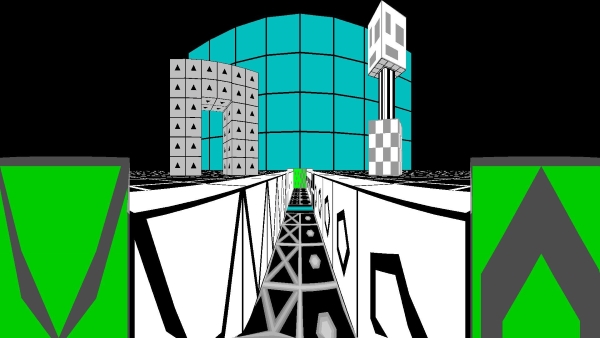[A new study at Northwestern University demonstrates how mammals use smells to navigate space and the technology developed for the experiment has the potential to improve presence experiences in future VR systems. This story is from WTTW-TV in Chicago and includes supplementary information from Northwestern Now and The Daily Northwestern. –Matthew]

[Image: Northwestern University researchers created a virtual environment for mice to navigate based solely on smells. (Courtesy Northwestern University)]
Sniff Test: Study Incorporates Smell into Virtual Reality
Alex Ruppenthal
March 5, 2018
Imagine strapping on a pair of high-tech goggles and immersing yourself in the sights, sounds and even smells of the Amazon rainforest, the Himalayas or some other far-off place.
A new study by researchers at Northwestern University could help tech developers incorporate smell into virtual reality systems, adding a new wrinkle to technology that has, thus far, focused primarily on visuals and audio.
“It’s been really difficult to add smell to virtual reality because it’s hard to have [smells] update rapidly,” said Daniel Dombeck, associate professor of neurobiology in Northwestern’s Weinberg College of Arts and Sciences, who led the study. “If you’re walking around in a room, the smells can change really quickly. Nobody has been able to build a system to upload smells fast enough.”
As part of an experiment involving mice, Dombeck and graduate student Brad Radvansky invented what they jokingly call a “smellovision,” the world’s first system to control rapidly changing concentrations of odor for mammals as they move around in a defined space.
[From Northwestern Now:
“Imagine a room in which each position is defined by a unique smell profile,” Radvansky said. “And imagine that this profile is maintained no matter how much time elapses or how fast you move through the room.”
That is exactly what Dombeck’s team developed, using mice in their study. Aided by a predictive algorithm that determined precise timing and distributions, the airflow system pumped scents — such as bubblegum, pine and a sour smell — past the mouse’s nose to create a virtual room. ]
[From The Daily Northwestern:
In the experiment, a mouse ran on a Styrofoam ball and smelled odors blown quickly onto its nose, Radvansky said. The mouse, facing a screen, ran up and down a virtual reality track, he added, with the ball acting like the mouse’s video game controller.
“It’s all in virtual reality, so the mouse doesn’t actually go anywhere,” Radvansky said. “It just sees that it goes somewhere on a screen and smells that it goes somewhere new.” ]
The mice were first introduced to a virtual environment created using both visual and olfactory cues. Researchers then shut off the visual virtual reality system, forcing the mice to navigate the room in total darkness based on smell cues alone.
Even after all visual cues were taken away, the mice were able to navigate around the room just as well as before. The study demonstrates for the first time that a mammal’s brain can form a map of its surroundings based solely on smells.
“It somewhat makes sense that you can navigate based on whatever cue is providing the most information,” Dombeck said, adding that when the lights go out, humans use nonvisual cues (such as touch and sound) in order to move around.
The researchers also tested the system on themselves by closing their eyes and holding up to their nose a small port attached to an airflow system that pumped out a variety of scents, such as bubble gum, pine and a sour smell. Although it took intense concentration and a lot of practice, Dombeck said he and others in the lab were able to say precisely where they were in the virtual world based solely on smell.
The technology used in the study, published Feb. 26 in the journal Nature Communications, could help improve understanding of how mammals use odors to navigate their surroundings and why they prefer some smells over others.
Since the study was published, Dombeck said he’d already been contacted by a law enforcement professional asking if the technology could be used to improve training for bomb-sniffing dogs.
“Maybe there’s a way that you could train the animals much more quickly with virtual reality, so that they form a very quick association,” he said.
As for the study’s impact on virtual reality designed for humans, Dombeck said there are already companies trying to develop VR systems that involve smell, though “they don’t look like anything you would want to wear,” he said.
But Dombeck said he expects the technology used in his study to eventually be incorporated into commercial VR systems to create a more immersive sensory experience.